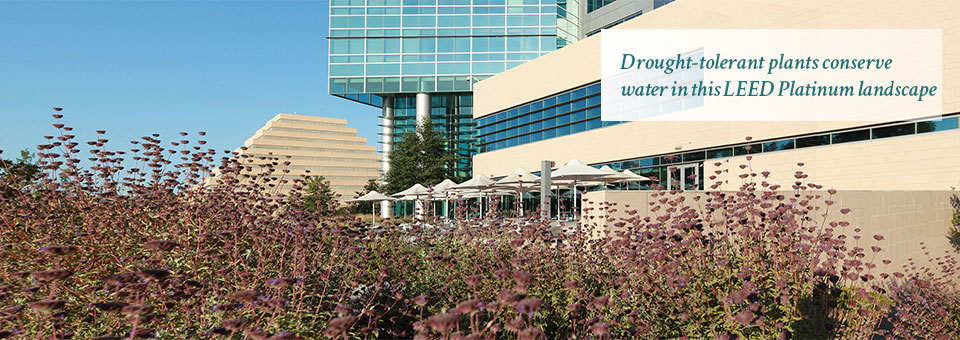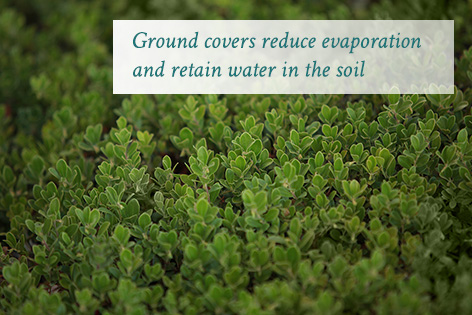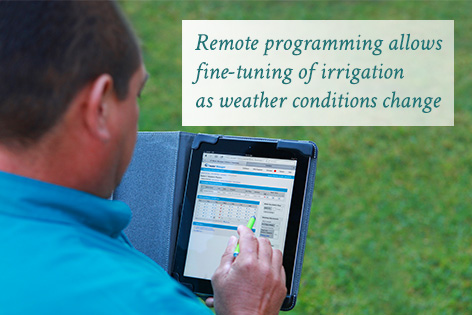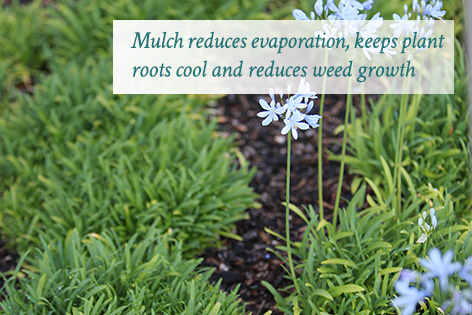
Conserving water with efficient irrigation practices
- We use drip irrigation systems wherever possible – the most efficient way to deliver water to plants. Drip systems reduce water waste, water cost, and plant disease, and there’s no overspray on paved areas or building structures.
- We use ground cover and mulch in planter beds – reduces evaporation and retains water in the soil. Adds nutrients to the soil, too.
- We use drought-resistant plants where possible.
- We use Smart Irrigation Controllers and Rain Sensors – reduces water use by fine-tuning irrigation to plants’ precise water needs. Shuts off irrigation during rain.
- We water between 12:00 am and 6:00 am – cooler temperatures reduce evaporation and allow water to penetrate deeply to roots. Calmer winds allow water to be delivered efficiently to plants, not blown onto pathways and buildings.
- We program multiple irrigation cycles – long, single applications of water can create runoff and waste. Shorter, multiple cycles allow time between cycles for water to penetrate more deeply into the soil.
- We inspect and adjust sprinklers weekly – ensures efficient delivery of water to plants.
- We repair broken sprinklers and lines immediately – reduces water waste and damage to plants.
- We use master valves on major irrigation lines – electronically-controlled automatic shut-off prevents water waste in the event of a broken line, valve or sprinkler.
- We watch for and prevent water runoff.
- We aerate lawns to help water and nutrients penetrate deep to the roots –promotes a healthier lawn with less water use.
- We offer alternatives to lawns – drought- and pest-resistant plants reduce water and pesticide use while retaining the beneficial cooling effect of plants.



